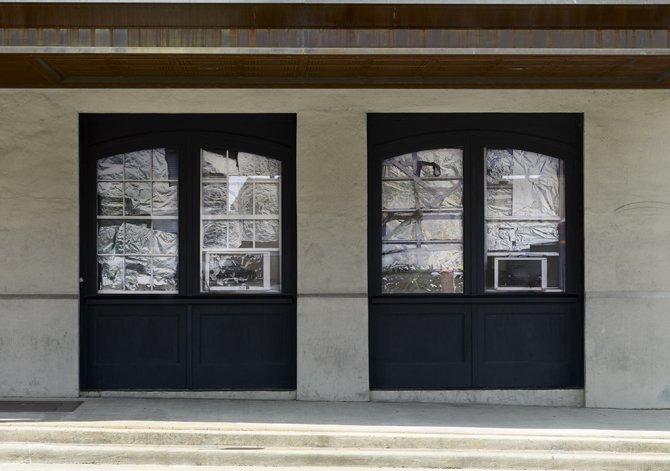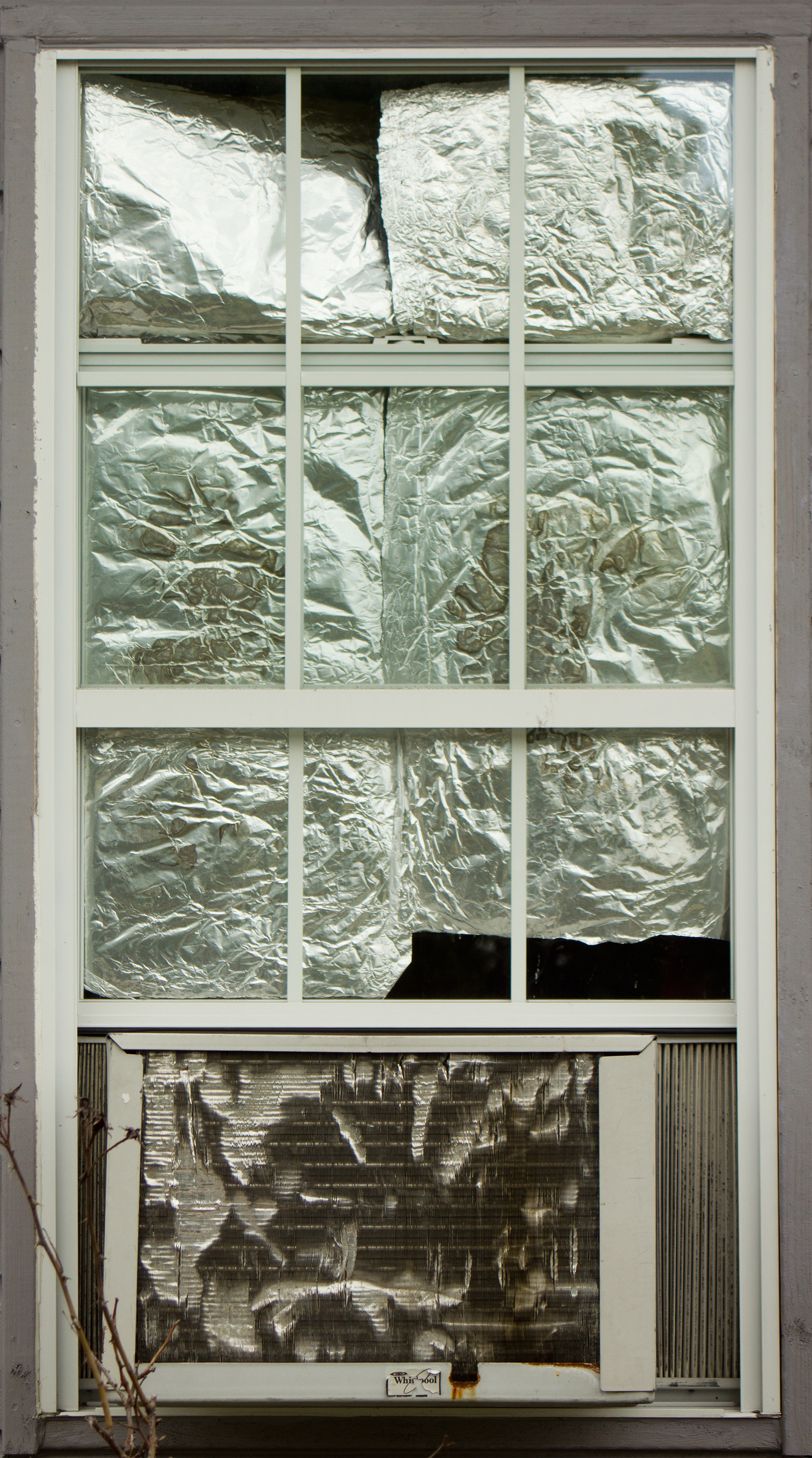Clarissa Tossin: Blind Spot
Window into Houston at 110 Milam Street
Commissioned by Blaffer Art Museum
May 8 - July 24, 2013
When Clarissa Tossin moved to Houston in 2010, she was struck by the ubiquity of domestic windows covered in aluminum foil. Often appearing in lower-income areas as an economically savvy strategy to block out the bright Texas sun, foil-covered windows suggested complex issues of location, class, history, and taste to Tossin. Such concerns occupy her work, which consists of subtle gestures using drawing, photography, video, and sculpture in order to illuminate what goes unseen or unexamined, be it architectural similarities between a settlement in the Amazon forest and a small town in Michigan or the intensive labor required to clean a pristine modernist government building in Brazil. Tossin aims to reveal and unsettle the invisible supporting structures of urban life, capital, and modernity.
For Blind Spot, Tossin photographed primarily in the Third Ward to capture the utilitarian yet creative ways residents cover their windows with layer upon layer of foil, bolstered by tape and plastic. Printed as high-quality digital images on vinyl and hung as blinds in the historic storefront windows at 110 Milam Street, Blind Spot effectively transposes locations by substituting one kind of window treatment for another, trading windows decorated of necessity for the photograph as art object and insisting that we see the city anew by taking the time to consider the relationship between these functions. Tossin’s images are densely textured with rich surface qualities in every crease and fold of the materials. The windows’ division into panes suggests grid-like formal dimensions, yet clean modularity is interrupted at every turn by a rusty spot on an air conditioner, bright green bursts of plants, faded blue painter’s tape, or pieces of foil that show their sun damage and do fully cover the glass.
Blind Spot poetically recalls Gordon Matta-Clark’s 1976 site-specific intervention in New York City titled Window Blow-Out, in which the artist placed photographs of broken windows of buildings in the South Bronx into the windows of the Institute of Architecture in Manhattan. Building upon this artistic precedent with strong social implications, Blind Spot claims covered windows as a constituent part of Houston’s urban history and aesthetics.
Curator: Amy L. Powell

